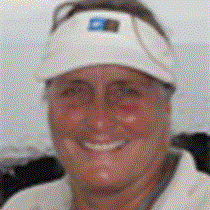Nauta and Pirahña Caños and San Francisco Village
“Knock-knock” was early this morning – at 0600 – for those of us who wanted to maximize our wildlife viewing; the early morning and late afternoon are the times of the day when wildlife is most active. In our three skiffs with our sharp-eyed naturalists we found many species to admire and photograph. This might have been a “sloth-watching” outing rather than a “bird-watching” one, as we saw at least four of these slow moving and appealing mammals. We watched one climb down from his high sleeping spot in a cercropia tree – very slowly indeed!
Yellow-headed caracara, russet-backed oropendulas, yellow-rumped caciques, two species of terns, ringed kingfishers, several species of flycatchers, swallow-winged puffbirds (the first I’ve seen all month) and probably at least another ten species of birds were seen in the short hour that we were out before breakfast. Both pink and gray dolphins were surfacing around the boat this morning and a tiny, foot-long water snake swam off our starboard side while we were having coffee on the top deck. The incredible biodiversity of the rain forest is obvious!
After breakfast we returned to the skiffs and went further up the fast-flowing black water Nauta Caño to explore and search for more wildlife. We were glad for heavy cloud cover because our ride was relatively cool – though humid, of course – until the late morning. Again we had an enjoyable outing and saw many new species. We saw a bit of everything: mammals (squirrel monkeys, monk sakis and several sloths), reptiles (cayman lizards and green iguanas), a couple types of amphibians (bright green and brown frogs) and lots of birds.
Among the birds perhaps the most outstanding were several raptors (birds of prey), notably the slate-backed hawks, a plumbeous kite, black-collared hawks, a great black hawk, yellow-headed caracaras and roadside hawks – which we propose should be renamed “riverside” hawks! Parrots and parakeets were also numerous, particularly the canary-winged parakeet. The largest of the Amazon parrots, the mealy parrot, flew overhead and blackheaded parrots were perched on a dead tree in plain sight – an “easy target” for our binoculars, naturalist Adonai said.
We gathered in the lounge area on the top deck to mark our wildlife list with naturalist Rudy, and found that, as a group, we have already seen and identified over 60 bird species and three species of monkeys. I gave a short presentation about the common primates of the Pacaya-Samiri Reserve and we all hope to see at least a half dozen of these monkey species by the end of the week.
The wind picked up during lunch and siesta, the gray sky was ominous and as we left the Delfin II the river navigation was a bit rougher this afternoon because of the waves. But once in the narrow and shady Piranhña Caño we motored along slowly and stopped when the naturalist spotted birds, sloths and monkeys. Crimson-masked tanagers were small but gorgeous and we all got good looks at them. We added a beautiful and quickly seen ringed woodpecker and squirrel cuckoo (the rain bird?) to our bird list and once we reached the Piranhña Lake there were several huge, goose-like horned screamers. This afternoon we found more squirrel monkeys, some of them had babies on their backs and we watched them leaping agilely from branch to branch overhead.
Rudy took a group of guests hiking through the forest behind the town of San Francisco. He pointed out palms (showed us how to make a jungle mattress and backpack if we were ever lost), canoe trees, fruits (and they sampled a bumpy anona that was ripe and delicious) and medicinal plants and found a big shiny black edible beetle (considered an aphrodisiac but you would need 50 or so to fry them up). Because of the high water much of the forest there is flooded so the walking was limited but our guests were grateful for the chance to stretch their legs and stand on firm ground once more before we head to the flooded forest along the Ucayali River tomorrow.
After the walk and skiff ride, everyone visited the handicraft market at San Francisco and enjoyed admiring the interesting items made by hand from rain forest fibers, gourds and seeds. Some of us bought a few things; pretty woven platters, carved animals, seed necklaces or bright frogs and butterflies made of palm fiber as gifts for friends or for ourselves to remind us of the rain forest once we are back in our own homes. Fun rings that will light up when pressed were given out and delighted the local girls and women.
After dinner we untied and headed into the mighty Amazon River! We navigated without fanfare into the confluence of the Marañon and Ucayali Rivers where the Amazon is formed. We then turned westward and headed up the Ucayali, travelling at speeds of between five and six knots against the strong current for around 40 miles until we tied up in the wee hours of the morning.




